Filming horror movies in concentrated urban centers can be a daunting, expensive venture. The directors who have managed to pull this off have produced movies that dredge up fears related to racial prejudice, financial corruption, environmental catastrophes, and post-industrial excess. Many of these horror films also function as social thrillers, which expose oppression by employing suspense and terror.
From Los Angeles to Chicago to New York City, the big cities that serve as settings for the dismaying circumstances that unravel in these movies have all dealt with their own issues related to identity, discrimination, and economic inequality. All of the films on this list use these urban contexts to make viewers think about the larger social and political issues that plague humanity to this day.
10 Candyman (1992)
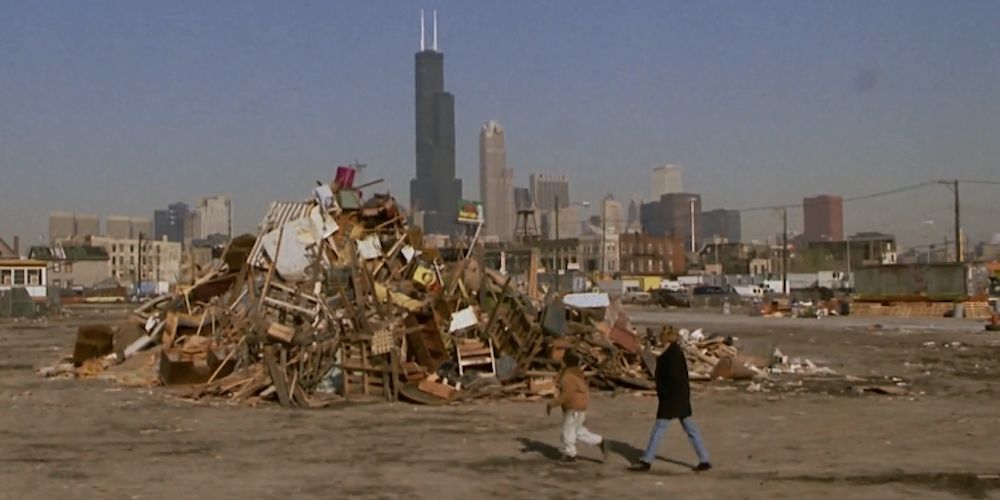
This sinister horror film is urban for two reasons: it takes place in a poor part of Chicago AND it focuses on a strange urban legend that disrupts the way of life for the people living in said neighborhood. Adapted from a short story by Clive Barker, Candyman's eponymous monster is a former murdered slave turned vengeful spirit who stalks residents of the Cabrini Green project.
A student at the University of Illinois played by Virginia Madsen decides to research the Candyman, and her meddling induces a series of strange and supernatural events. The movie provides an honest and raw portrayal of the suffering endured by residents of these poor Chicago projects, raising questions about urban divestment and systemic injustice.
9 The People Under The Stairs (1991)
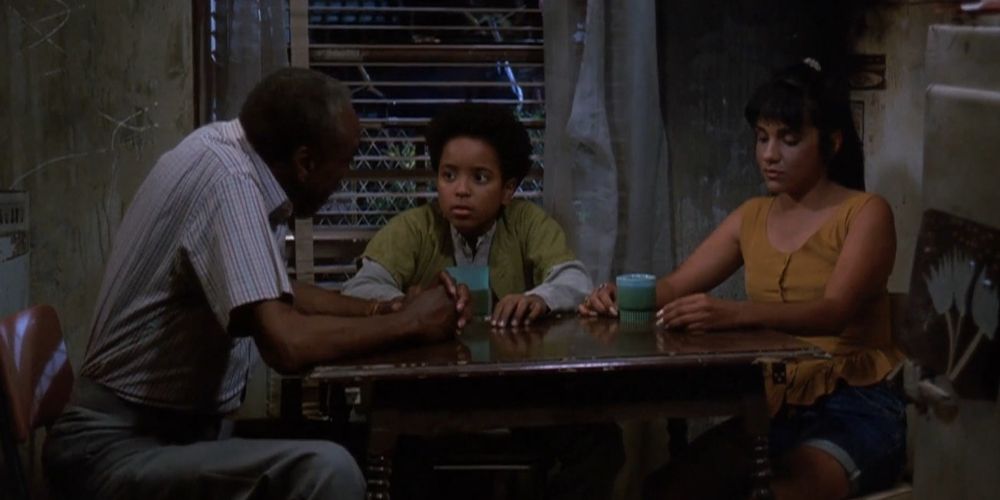
A classic urban horror film from Wes Craven, The People Under the Stairs is an over-the-top soap opera full of social relevance and some legit scares. It also includes a stellar performance from child actor Brandon Adams, who plays Fool. Fool lives with his family in Los Angeles, and after they are evicted from their apartment, he breaks into the house of his former corrupt landlords to take back the money he feels has been cheated from his family over the years.
Fool is black, and he discovers that these white landlords are a pair of incestuous, serial killing siblings who harbor children in the walls of their home. The children have been kidnapped by the siblings, and they have all experienced systematic torture and abuse at the hands of their kidnappers. Fool, instead of thinking only about himself, decides to save the ill-fated children and take out the murderous slum lords once and for all.
8 No Way Out (1950)
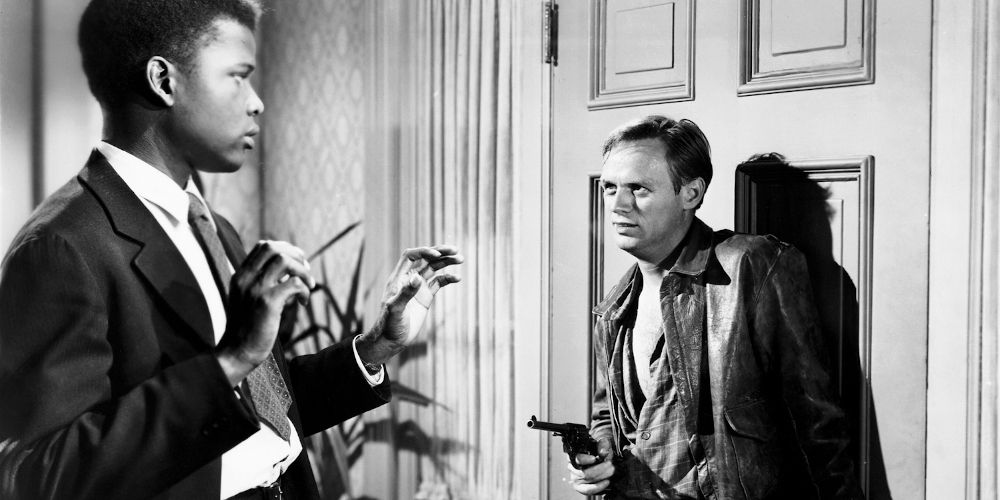
Perhaps closer to a social thriller than a horror film, No Way Out is a terrifying flick that tackles racism head-on. It is also the debut feature of legendary actor Sidney Poitier. Poitier plays a young doctor named Luther Brooks working in an unnamed urban prison hospital. He's hired as part of an integration initiative. One of the first clients he takes care of is a bigoted, white convict named Ray.
After Ray's brother, also wounded and imprisoned, dies under Brooks's watch, Ray dispatches his racist gang to terrorize the black community in the city. Things get worse from there. In many ways, No Way Out predicted the Civil Rights struggles yet to come for black people all over the country.
7 C.H.U.D. (1984)
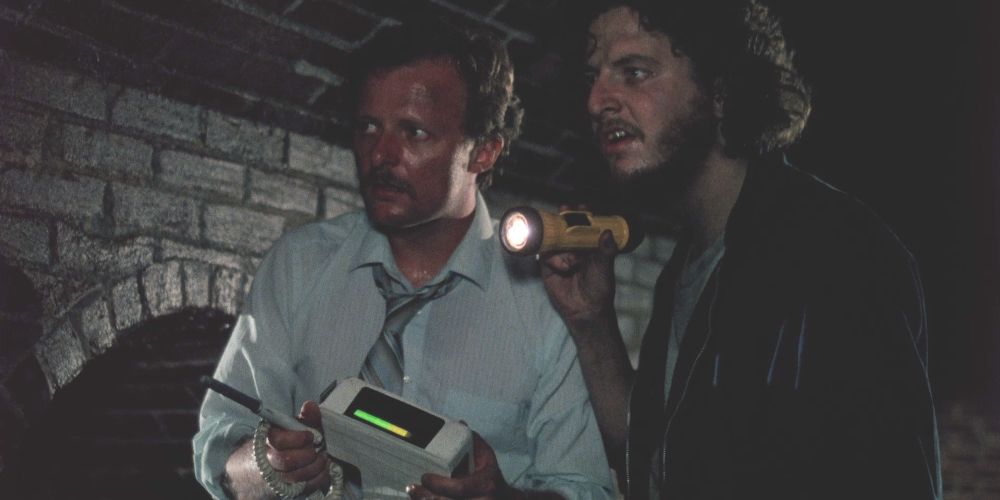
C.H.U.D. is short for Cannibalistic Humanoid Underground Dweller, which gives you plenty of insight into how this movie works. It involves government corruption, pollution, investigative journalism, and, of course, legions of humanoid monsters living in the New York City sewers.
A photographer played by John Heard learns that an illegal nuclear waste dump occurred under the city's streets and bred a new race of monsters who are growing tired of their underground habitats. He formers an alliance with a radical soup kitchen cook played by Daniel Stern who has been onto the problem for some time. C.H.U.D. turns out to be a creature feature that indulges in the filth and disparity that defined New York City in the 1980s.
6 Crash (1996)

Auteur David Cronenberg is responsible for this erotic horror film, which takes place along the expansive, labyrinthine highways of Toronto, Canada. A divisive movie, Crash is based on the infamous novel by science fiction author J.G. Ballard.
After surviving a near-fatal car crash, commercial executive James Ballard, played by James Spader, begins to fetishize car crashes and people who have been injured by them. He delves into a vast underworld of people who recreate celebrity car crashes and photograph crashes within moments of impact. The movie provides a scientific analysis of how technology and industrialization affect the human psyche.
5 They Live (1988)
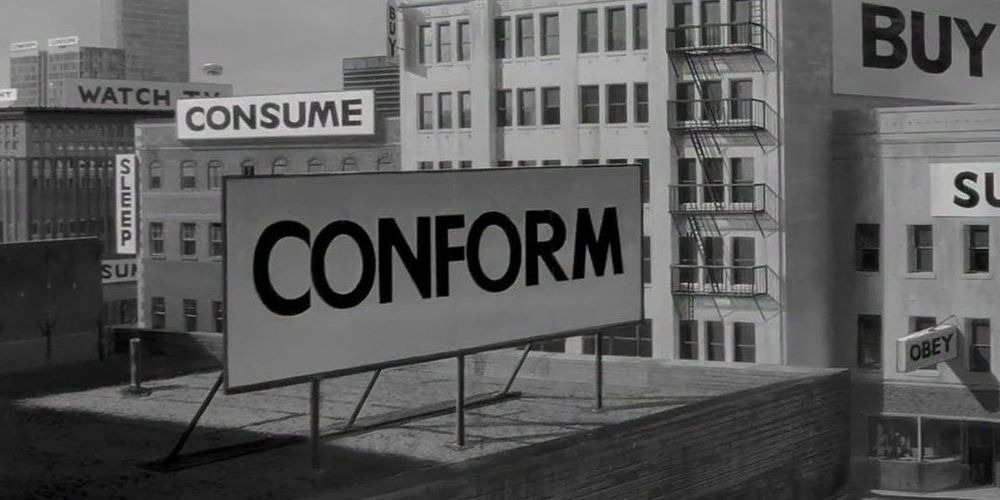
John Carpenter's half-action, half-horror look into dystopian Los Angeles provides a lot more nuggets of truth than may be apparent upon a superficial viewing. Taken as a silly flick full of combat and fighting, one that stars wrestler Roddy Piper, They Live seems like any standard-fare theatrical release. Taken as a horror movie about controlling the masses through media consumption, it comes to feel a little more pertinent.
Piper stars as John, a muscular drifter who comes to realize an alien race has hypnotized humanity through subliminal messaging. He gets involved with a local resistance movement, where he gets access to a pair of special Ray-Bans that expose the world as it really is, disclosing the reptilian identity of the invaders.
4 American Psycho (2000)
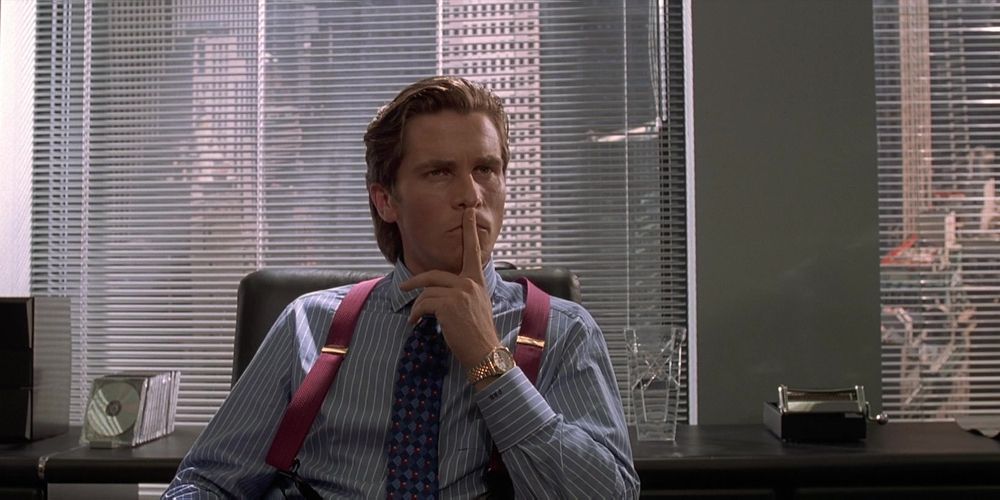
Mary Harron's contentious adaption of Bret Easton Ellis's even more contentious novel stars Christian Bale as the infamous Wall Street madman Patrick Batement. The movie takes place in 1980s New York City, focusing on the lives of the wealthy socialites and habitual drug users around Bateman. Psychological and visually graphic, the movie details the mental unraveling of Bateman, who may or may not be murdering everyone around him en masse.
The film, like the book, is broken up with absurd monologues about Huey Lewis & The News and long discussions about business card stock. American Psycho turns out to be the perfect expression of the consumerism and excess that characterized life for the upper echelons in the evolving New York City of the late 1980s.
3 Jacob's Ladder (1990)
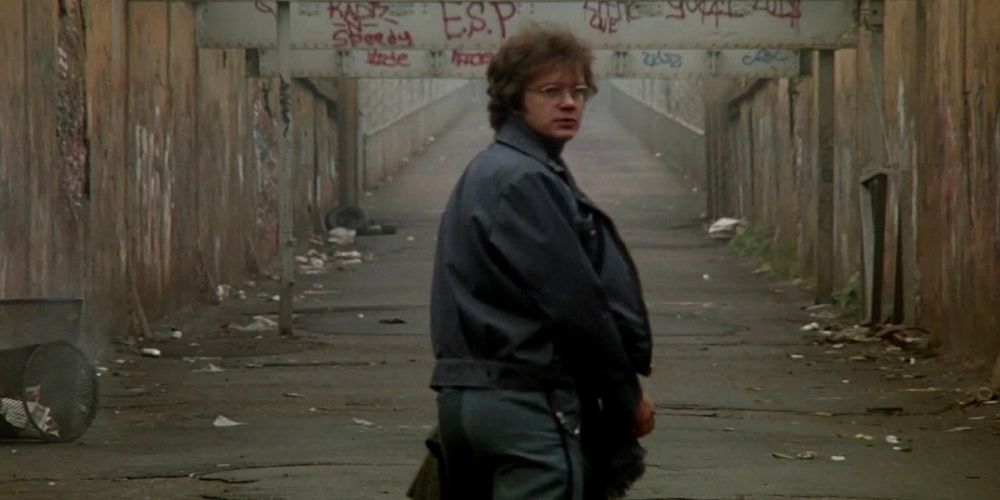
New York City serves as the backdrop for the emotional and mental unwinding of a Vietnam War veteran played by Tim Robbins in Jacob's Ladder. His character, Jacob, experienced some sort of severe trauma in Asia, the kind of trauma he can't escape no matter how hard he tries.
He wanders through the littered streets of 1970s New York as a Postal Service employee after the war, reeling from the death of his young son. The real world starts to cave in on Jacob, and he begins to experience startling and terrifying hallucinations that cause him to question everything he knows about the world.
2 Attack The Block (2011)
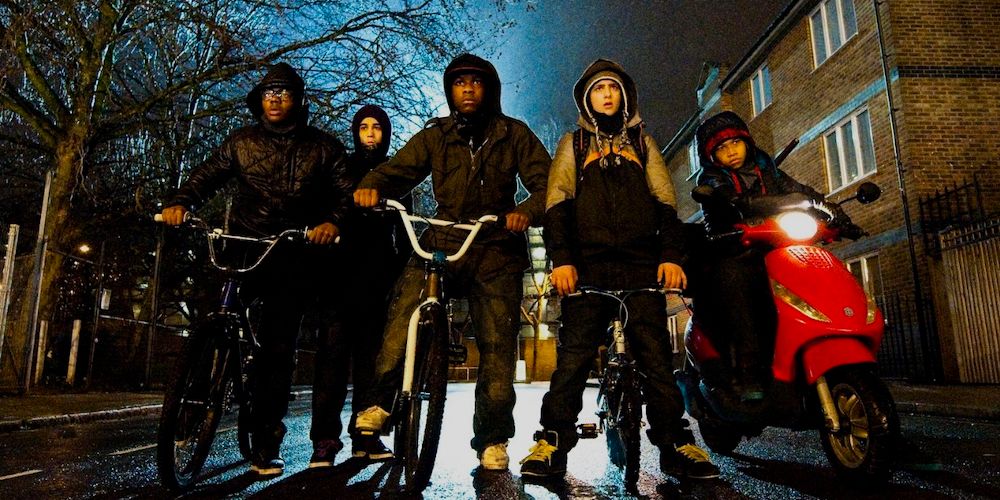
A cheeky London alien invasion film, Attack the Block focuses on a group of teens whose attempt to rob a woman is thwarted by the arrival of a terrifying extraterrestrial beast that attacks the leader of the group, Moses. As more creatures descent upon them, it becomes clear they all have bigger problems to deal with.
This movie makes heroes out of the often ostracized youth who hang out in "rough" neighborhoods. While the teens in Attack the Block aren't perfect, they seem pretty prepared to take on a bunch of mean alien creatures, more than likely due to the fact that they had to grow up pretty fast to survive on the streets.
1 Rear Window (1954)
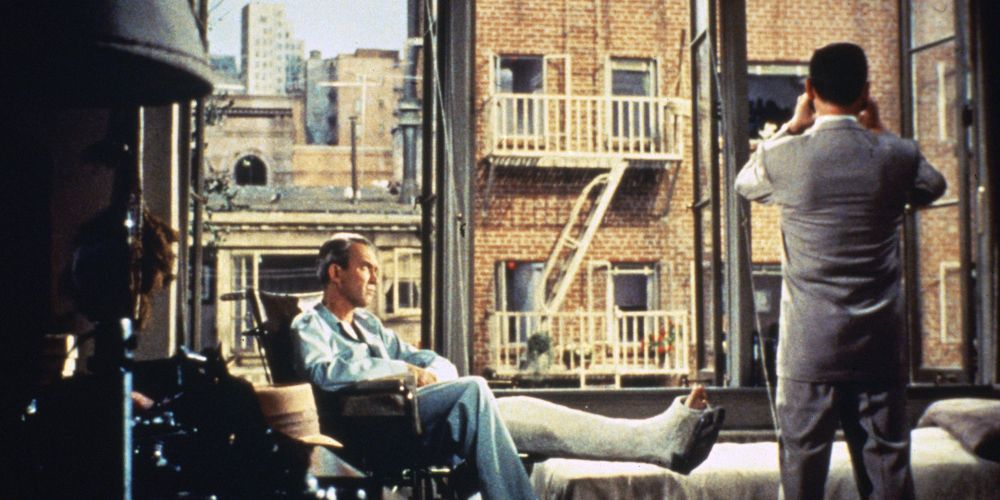
Alfred Hitchcock's voyeuristic classic stars James Stewart as a photojournalist forced to heal from a broken leg in his tiny apartment. As the days grow in number, the bored man starts paying attention to the comings and goings of the neighbors in his tight, compact block. One afternoon, he believes he witnesses something despicable: one of his neighbors murdering his wife.
Even though audiences come to understand the murder really did happen, Rear Window is still a scathing investigation of personal spying in urban centers. What makes people so nosey? What if all the terrible things you imagine about those around you come true? The movie seeks to answer these kinds of questions.
from ScreenRant - Feed https://ift.tt/2RiqIpj





No comments: